How often do you create recipes based on one ingredient?
I have a habit of doing just that.
Get this, I was craving toasted coconut, and knew that if I had no other purpose except to eat as a snack, I’d be okay with that.
Except I toasted more than I could eat. And as you might already know this, a little toasted coconut goes a long way.
Then last week, I ordered King salmon from i love blue sea, an online sustainable seafood supplier, and started thinking, “Hmmm…how can I add toasted coconut to salmon?”
To get started, I consulted one of my favorite cookbooks, Splendid Soups, by James Peterson, copyright @ 1993. It appears to have been reprinted in 2001. Whichever copy you own, I hope you’re as satisfied as I am. This is not a sponsored post, nor is it a promotional plug for Peterson, (although I’d be thrilled to meet him.) Splendid Soups has become my soup encyclopedia.
My recipe is adapted from Peterson’s, Indian-style Curry and Coconut Fish Soup. The first step, creating the spicy, hair-conditioner like paste, is Peterson’s brilliant idea. After that I went into my pantry, then to the grocery store.
I think JP would be proud of me.
And I since I only used toasted coconut as a garnish, I still have all that toasted coconut.
Thai Coconut Salmon Chowder
Serves 4-6
Now, you might be thinking chowder and hearty soups lend themselves to cooler weather, but my Thai Coconut Salmon Chowder is fresh, spicy and remarkably, light. It’s perfect for a rain-soaked spring evening, a sultry, hot summer night, lunch, served alone or with steamed jasmine rice, and, and…okay, I know. You get it.
Cook’s notes: Any salmon species will work for this recipe. The only salmon species I don’t use is farmed salmon. If your budget won’t allow for fresh King salmon, then frozen Sockeye or Coho salmon are excellent options. Thaw frozen salmon twenty-four hours, ahead of your start time, in the refrigerator. Remove the skin and bones from the salmon before you begin making the chowder. Keep the salmon covered in the refrigerator until ready to use, as it’s one of the last ingredients added to the chowder.
If using toasted coconut for garnish, toast coconut flakes at 350 degrees on a baking sheet for four minutes. Watch carefully at three minutes, coconut burns quickly. Remove toasted coconut from the oven, cool, then store in an airtight container until ready to use.
Ingredients
- 2 tablespoons coconut oil, divided
- 2 tablespoons butter
- 4 whole garlic cloves
- 3 tablespoons fresh ginger, cut in strips
- 2 tablespoons shallots, diced
- 1 small jalapeño pepper, chopped, use ¼ of seeds
- 1 tablespoon olive oil
- 1 tablespoon sugar
- 2 cans coconut milk (13.5 ounce each)
- 2 cups chicken stock
- 2 tablespoons fish sauce
- ½ red bell pepper, thinly sliced
- 3 Yukon gold potatoes, diced
- 3 tablespoons prepared peanut satay sauce
- ½ cup dried oyster mushrooms, rehydrated and sliced, or sub fresh shiitake
- 2 tablespoons fresh cilantro, chopped, reserve several whole leaves for garnish (optional)
- ½ pound fresh boneless, skinless king salmon, (I used the tail and belly of the filet)
- ¼ cup coconut, toasted, for garnish (optional)
Directions
- In a food processor or mortar and pestle, combine 1 tablespoon of the coconut oil, butter, garlic, ginger, shallots and jalapeño. Pulse or grind to a smooth paste. You’ll need to scrap down the sides a few times, and then add the olive oil at the end of the process. You want it to be smooth, thick and silky, like a good hair conditioner. If you have neither food processor nor mortar and pestle, mince all the ingredients as small as you can to create this creamy texture.
- In a stockpot, heat the remaining one tablespoon of coconut oil on medium high heat. Add the ingredients from the processor, reduce the heat to medium and cook for about five minutes, stirring often.
- Add the sugar, stir and cook another minute.
- Add the coconut milk, chicken stock and fish sauce. Stir and cover with a vented lid. Bring the broth to boil and reduce the heat again, to medium-low. Simmer ten minutes. Stir occasionally. If the liquid is boiling, reduce the heat to low.
- While the liquid is simmering, slice the peppers and dice the potatoes. Add the vegetables to the broth and continue simmering about fifteen minutes.
- While the vegetables are cooking, hydrate the mushrooms according to the package, or however you normally do it. (I put them in a bowl, added boiling water and let them sit for fifteen minutes.) Slice or chop.
- Chop the cilantro.
- Remove the salmon from the refrigerator and cut the fish into bite size pieces.
- At this point, the potatoes should be finished cooking. Add the prepared peanut satay sauce and stir. The broth color will change from a creamy-buttermilk color to a pale brown-ish orange color.
- Add the sliced mushrooms, salmon and cilantro. Increase the heat to medium-high, cover with a vented lid and cook three to four minutes.
- Remove the stockpot from heat source, ladle into bowls, garnish with cilantro sprig and toasted coconut.
- Serve immediately.
What have you made lately with one ingredient in mind? Or better, do you have any toasted coconut ideas?

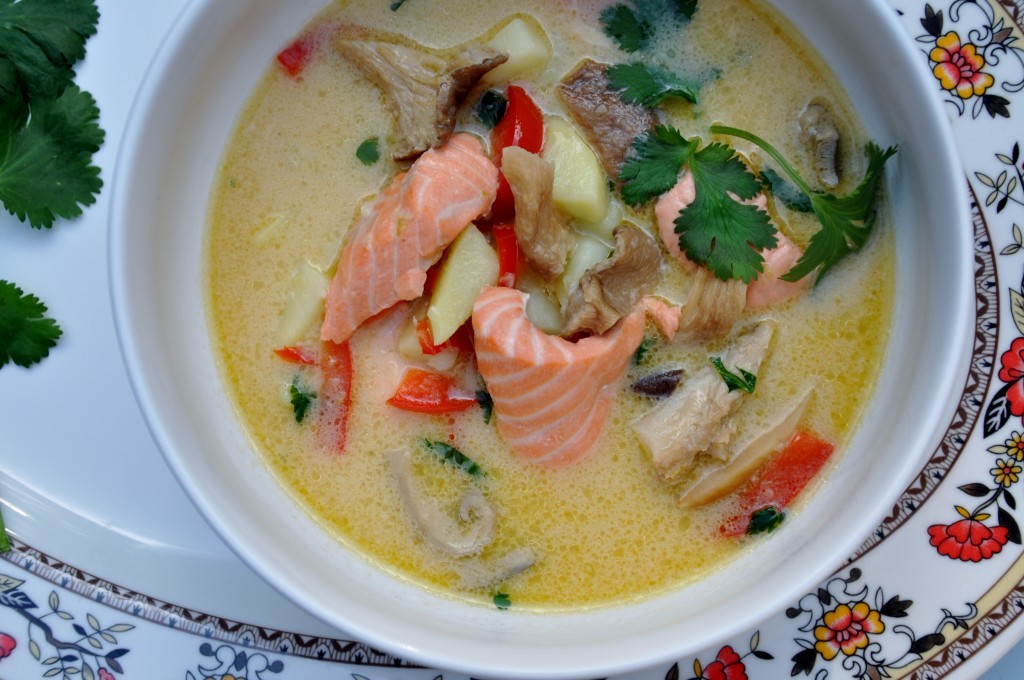
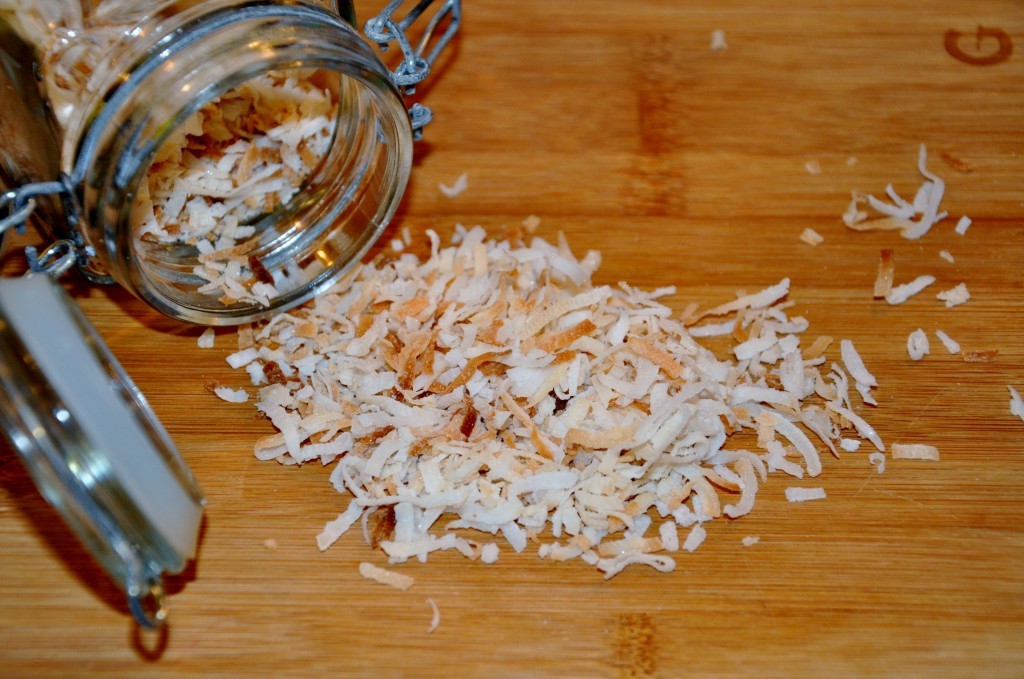

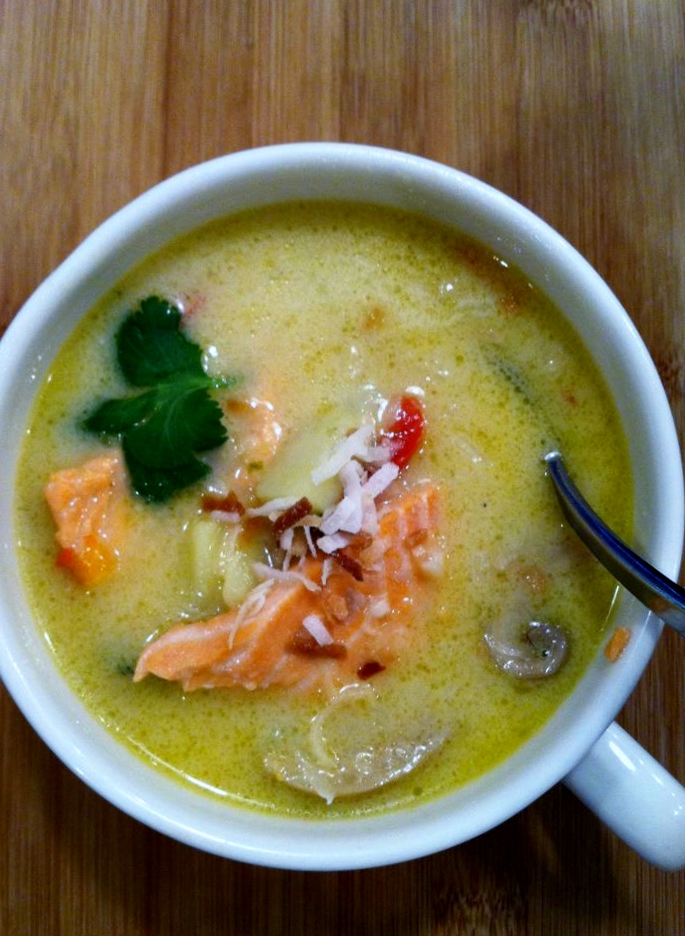
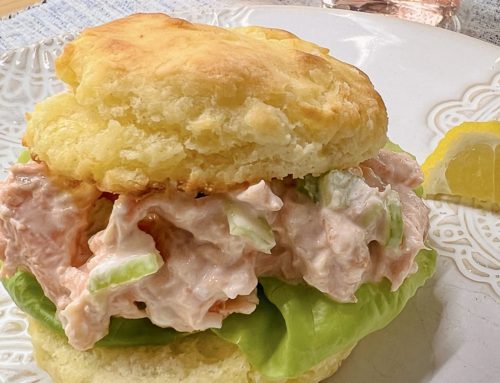

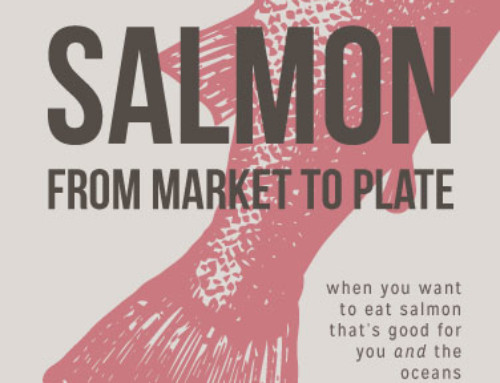



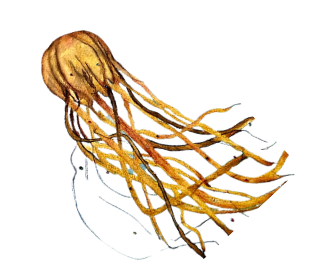

Thanks for this great recipe! I was craving a soup with salmon, ginger and coconut milk, and landed on your recipe through a google search. I’ve made it several times now, and the whole family loves it. I leave out the jalapeño seeds (on account of my 1 and 4 year olds), and sub sweet potatoes for regular, but otherwise make it as listed. The paste is brilliant — big flavor!